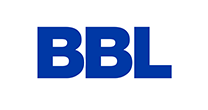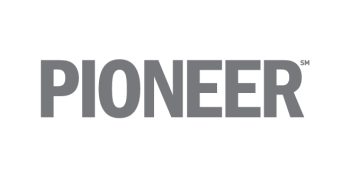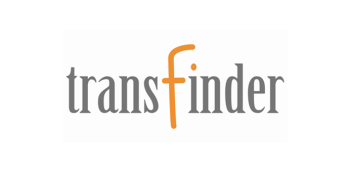News
November 8, 2018Top Tax Tips for Small Businesses
Managing your taxes is one of the most stressful aspects of being a small business owner. Waiting until the last minute will only make the process worse and can often result in a larger tax bill in the long run. Reduce your stress by planning in advance and implementing top tax saving tips now.
First and foremost, now is the time to contact your tax advisor and learn how the Tax Cuts & Jobs Act impacts your business. Although the law was enacted in December 2017, many provisions are effective beginning with the 2018 tax year. A lot has changed. Don’t make the mistake of waiting until December to understand how the changes impact you or to identify tax planning moves that can reduce your tax bill.
Here are some key considerations:
1. Choice of Entity Review
There are two major changes that impact whether the type of entity you own remains the best choice for tax purposes. Changing the classification of your business takes careful planning.
The first change is that the C corporation tax rate is now a flat 21 percent. Previously, tax rates ranged from 15 to 35 percent. In general, the rate decrease is favorable to most corporations, but you may not agree if you historically paid 15 percent because your taxable income was less than $50,000. If you operate a professional service corporation, such as a medical practice or law firm, the tax rate is also 21 percent, as opposed to the previous flat rate of 35 percent.
The second change is that the new law created a 20 percent pass-through income deduction. Many factors are considered, including if you have a service business, the amount of taxable income, if you pay wages, and the type of entity you operate, amongst others. (Note: this deduction sunsets at the end of 2025.)
2. Compensation Planning
Because of the pass-through income deduction outlined above, S corporations should review the wages paid to shareholder-employees. In computing the qualified business income that the pass-through deduction is based on, shareholder wages are subtracted. Therefore, the less wages paid to shareholders, the higher the potential deduction. However, this does not mean that they can forego or only take nominal wages. IRS guidance is clear that shareholder-employees must pay themselves reasonable compensation and, if they don’t, the IRS can recharacterize distributions to wages and impose payroll taxes.
For partnerships (and LLCs taxed as partnerships), partners are not employees and are not paid wages. Sometimes partners are paid guaranteed payments. Partnership income other than guaranteed payments is considered qualified business income for purposes of computing the deduction – meaning the less guaranteed payments, the higher the potential deduction. Consideration should be given to reviewing the partnership agreement and guaranteed payments to ensure the payments are appropriate or necessary.
3. Depreciation
If you are considering purchasing any fixed assets before year end, the Section 179 deduction increased to $1 million in 2018 – up from $510,000 for tax years beginning in 2017 – and the phase-out threshold on purchases increased to $2.5 million. Section 179 allows a deduction for the full purchase price in the year of acquisition for qualifying property. Previously ineligible property such as roofs and HVAC property can qualify. In addition, first-year bonus depreciation increased from 50 to 100 percent for qualified property placed in service through December 31, 2022. Thereafter, the percentage is reduced annually, and bonus depreciation will expire in 2027. A significant change is that used property now qualifies for bonus depreciation.
4. Accounting Methods
Good news! Gross receipts thresholds were increased to expand qualification for use of the cash method of accounting, reduce use of the percentage of completion method for contractors, exempt certain taxpayers from the requirement to keep inventories, and reduce applicability of the Section 263A UNICAP rules for inventory. Reviews of accounting methods are important to identify if there is potential to accelerate deductions or defer income.
5. Meals and Entertainment
The new law changed many of the rules for meals and entertainment. Client entertainment expenses are now non-deductible. Certain types of meals that were previously 100 percent deductible are now subject to a 50 percent limitation. However, some meals, such as holiday parties, award dinners and company picnics, remain fully deductible. Don’t leave these deductions on the table.
6. Interest Expense
Beginning in 2018, businesses with average gross receipts of $25 million or more are subject to interest limitation rules. Certain types of businesses are exempt (e.g., “small businesses,” “electing farming businesses,” and certain utility companies). The limitation is based on certain income thresholds and will change over the next eight years. Aggregation rules apply when computing gross receipts for certain commonly controlled entities. Businesses faced with this limitation may reassess whether an owner lends funds or makes capital contributions.
7. Pension Plan
As mentioned above, a new 20 percent pass-through deduction exists. However, taxable income restrictions are imposed on many service business owners that begin at $315,000 (married filing joint). Service businesses looking for deductions to reduce income below the threshold may consider implementing or enhancing a qualified retirement plan. A business may already have a defined contribution plan, such as a 401(k), that provides the maximum allowable deductible contribution. However, they could explore a defined benefit plan, specifically a cash balance plan, to increase the retirement plan contribution beyond what 401(k) profit sharing plans allow.
8. Lease Structuring
It is not unusual for business owners to have separate legal entities for the operating company and real estate. Often these leases are structured as a triple net lease, whereby the lessor doesn’t participate in the operations. Rules involving rental real estate rising to the level of a “trade or business” as required to qualify for the 20 percent pass-through deduction are unclear. Lessors with triple net leases face significant uncertainty with qualification. There is a provision that taxpayers can aggregate multiple pass-through entities (for example, an operating and real estate holding company), but it can only be used in specific circumstances. Leases may need to be revisited.
9. NYS Employer Compensation Expense Tax
Also related to the $10,000 cap on the state taxes deduction, the 2018-19 New York budget allows employers to opt into a new Employer Compensation Expense Tax that converts a portion of the state income tax deduction to an elective employer paid payroll tax and an employee wage tax credit. The employer must make an annual election by December 1 each calendar year. Although employees receive a tax credit on their New York individual tax return, it is not dollar for dollar.
It’s clear that this year’s standard year-end tax planning goes far beyond the usual deferral of income and acceleration of deductions. It may entail rethinking your legal entity type, modifying your partnership agreement, evaluating compensation or guaranteed payments, amongst other potential changes.
Proactively planning for your tax liabilities throughout the year will result in the most savings. It’s important to speak with a qualified tax professional who can provide the guidance you need to determine which deductions and credits your business may qualify for in this new tax world.
Our tax and finance advisors at BST & Co. are available to meet with you now to make sure you’re on the right track come the end of the year. Contact us today at 518-459-6700.
























